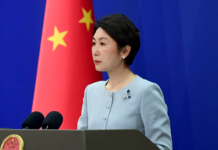Pakistan has fortunately fared well in its ongoing fight against the Covid-19, having survived three deadly waves that have so far claimed 22,000 lives, a figure that is quite low given our population density and the variety of problems associated with implementing social distancing, mask wearing and lockdown protocols in a country of 220 million. However, the fight is far from over and the only truly sure shot way of returning to some form of normality, as exemplified by the US, is to vaccinate a significant proportion of the population, around 70%, as quickly as possible to reach herd immunity. Pakistan too is targeting to reach this number by the end of this year but going by the vaccine rollout effort so far, this seems unlikely, with only 1.7% of the population fully vaccinated. One of the major hurdles in gaining the efficiency and speed required to reach a higher daily dose administration rate, are serious supply chain deficiencies in vaccine procurement. Despite having allocated funds for Covid-19 and receiving relief funds from various international institutions including the IMF and World Bank, the PTI government remains largely dependent on vaccine donations, mostly from China and the WHO’s Covax program.
Although the latest shortage of vaccines hitting Punjab over the weekend, forcing people to line up at various closed vaccination centres, has now been resolved with a batch of 1.5 million doses airlifted from China, there are valid concerns over where the funds earmarked for buying vaccinations have gone. Opposition parties are demanding a ‘forensic audit’ of how the money was utilized. Last year, the Supreme Court raised similar concerns and called upon the NDMA chief at the time to explain irregularities in Covid-19 equipment and PPE procurement practices. Not only do those questions remain unanswered, but the person being asked for those answers has since been replaced. When new vaccines like Russia’s Sputnik-V came to market, local private pharmaceutical companies, after getting necessary approvals from the government, procured batches and sold them to those able to afford the higher price tags. What is stopping the government from doing the same is unclear. In the absence of a steady supply chain, that is made up of both donated and purchased doses, the government is unlikely to achieve the stability required to run an effective national inoculation program.






















